Out now on Steam, PlayStation 4 and Xbox One, Tannenberg is a standalone expansion to WW1 multiplayer FPS Verdun, taking the 1914-1918 WW1 Game Series to the Eastern Front. Warfare between the Russian Empire and the Central Powers is a tense battle for dominance – stay close to your squad to survive!
Tannenberg brings the massive battles of the Eastern Front in WW1 to life with players fighting for control of key sectors of the battlefield, each one offering a distinct strategic advantage. Warfare between the Russian Empire, Germany, and their allies offers a fresh experience for first person shooter players and history aficionados alike.
There are seven squads, 50+ weapons, eight large maps that give players tactical freedom, and full AI bot support so you can experience epic battles at any time! Everything has been recreated with the same attention to detail seen in Verdun, the first entry in the WW1 Game Series.
This historical game takes place across the lakes, forests, mountains and snowy plains of the Eastern Front - it was inspired by the Battle of Tannenberg in 1914, one of the most iconic encirclement battles in history. Players will be able to master a range of authentically modelled equipment brought to the field by Russian Frontovik and Cossack squads, the renowned Latvian Riflemen, or the Roumanian infantry squad., Alternatively they can join the Central Powers to serve in an Austro-Hungarian K.u.K. unit, with the German Infanterie, or in the Bulgarian rifle section.
Tannenberg offers several game modes - including the exciting Maneuver game mode reflecting the nature of war on the Eastern Front, as players battle across large maps where the objectives and battle lines are always shifting. Survive the deadly battles by working together with your four man squad and utilizing your distinctive skills. There is a wealth of historical detail including realistic WW1 weaponry, authentic uniforms, horrendous gore, and maps based on real battlefields.
Tannenberg key features include:
- Authentic WW1 atmosphere; accuracy in everything from maps and weaponry to uniforms
- Tactical squad-based FPS; play as Russian, Roumanian, Latvian, Austro-Hungarian, German and Bulgarian troops
- Eastern Front landscapes; large maps each with weather variants from snow to summer sun
- Maneuver game mode; capture strategic sectors in grand battles of movement
- Never fight alone; squad gameplay and AI bots for Maneuver so you can join epic battles at any time
For more information, please visit Tannenberg on Steam, like us on Facebook, subscribe on YouTube, and follow us on Twitch and Twitter.
Well done, mountaineers! The mountain was conquered many times - overall the Austro-Hungarian defenders won more often than the attacking Italians, but not by as much as you might think. A mountain is a big place, and it's not easy to observe the entire cliff face from above, or to spot individual Alpini against the rock. For most of the event the Italians managed around to win around 40-45% of the time. A very respectable success rate.
On the other hand, it seems that for all their elegant simplicity, rocks are actually not the most effective weapons. Only 1% of players earned the Rock 'n Roll achievement for killing someone with a rock. And considering how many rocks we've seen in our matches, it wasn't from lack of trying!
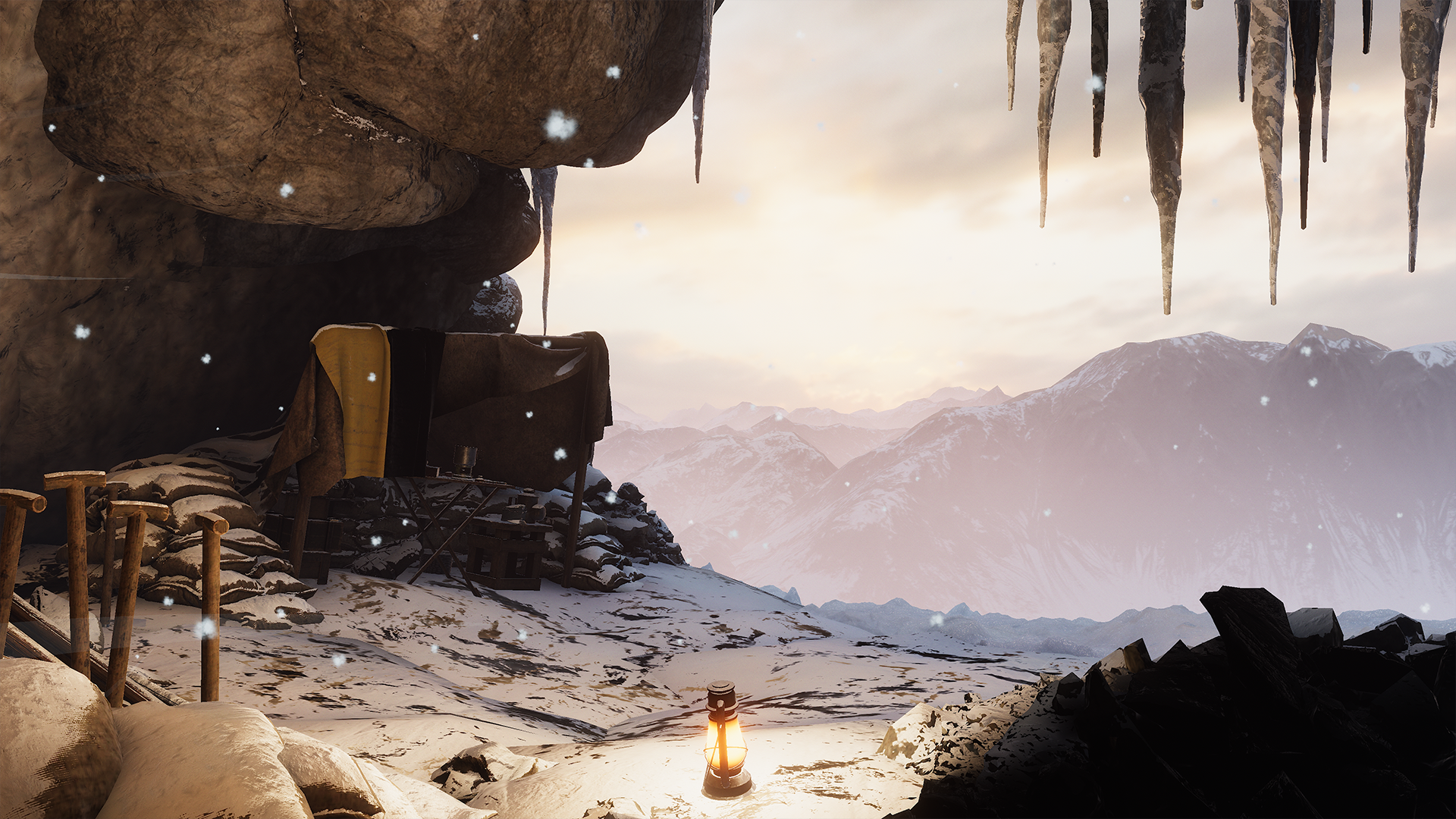
Don't worry! Ascent will be back.
As with the special modes for Verdun and Tannenberg, you can expect Ascent to return on a semi-regular basis. This won't be the last time you'll be scaling the 'Queen of the Dolomites'!
Community Screenshots
Most of you were too busy throwing or dodging rocks to indulge in any combat photography, but there were a number of shots we enjoyed from the event.
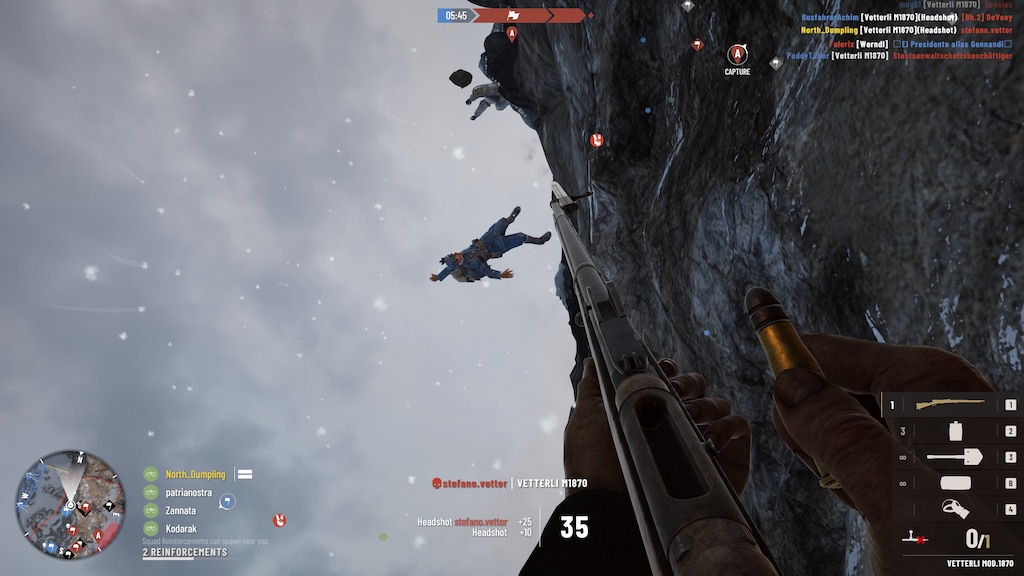
Cinematic action shot by North_Dumpling.
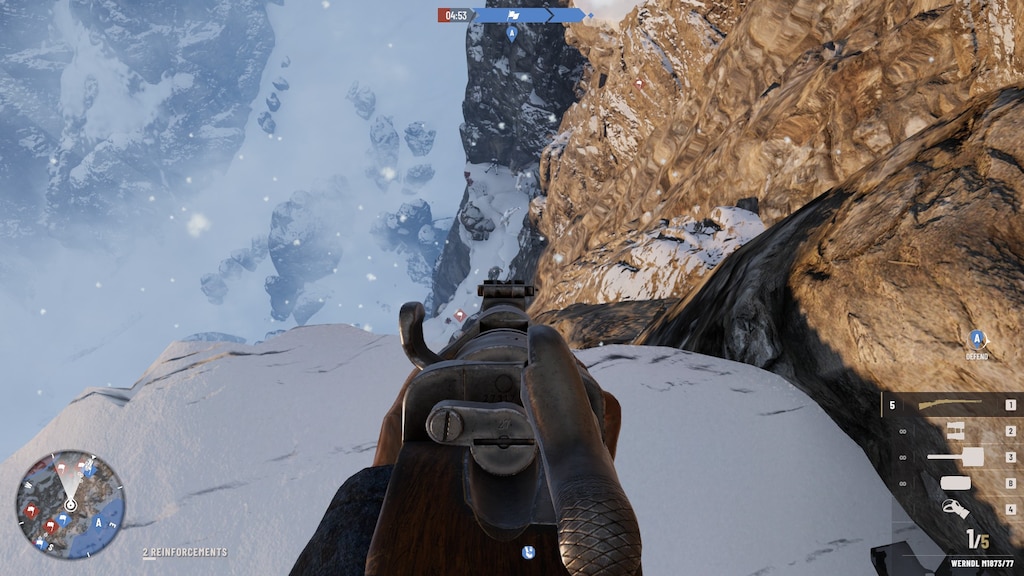
Aiming down by Golden$Dragon.
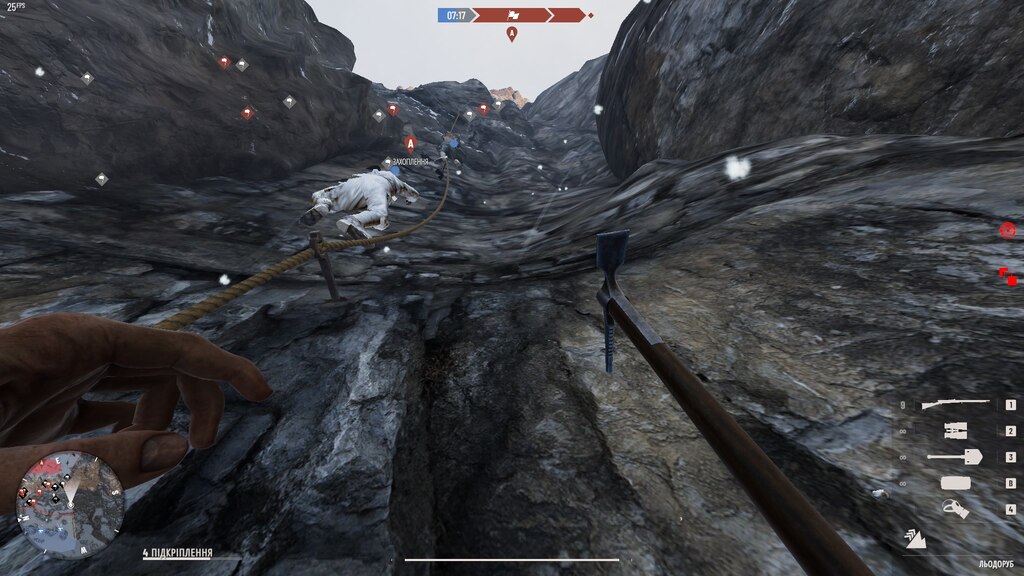
Looking up to a long rope by Jan Schovanek.
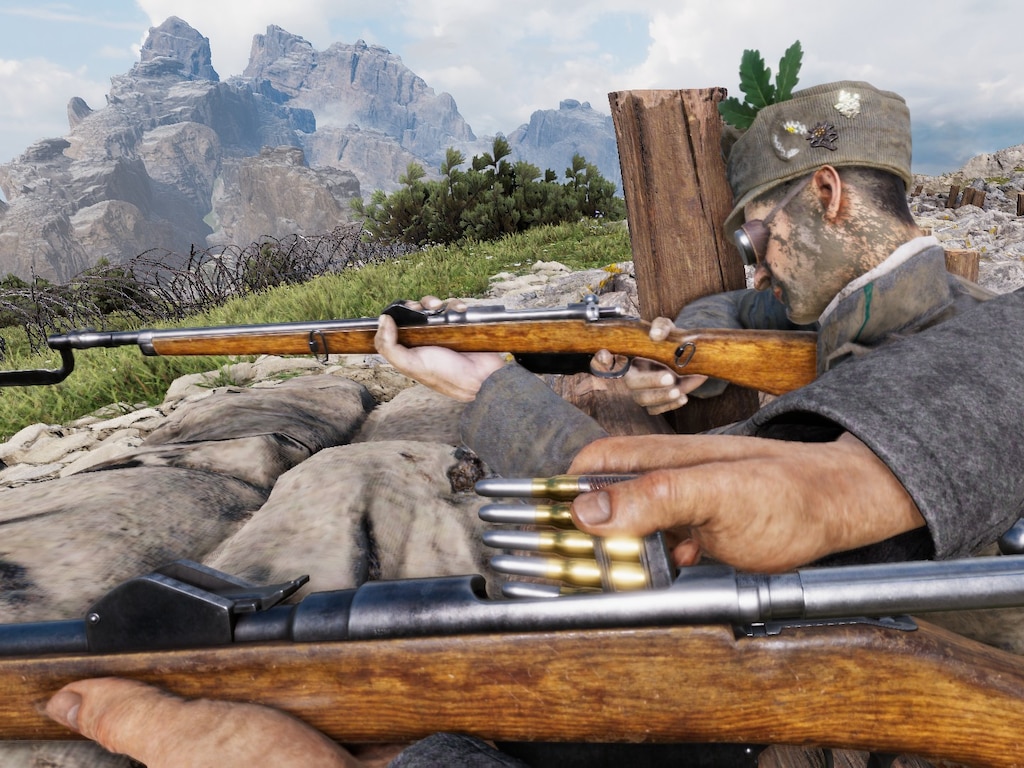
Not Ascent, but a fantastic shot by Wulfess from earlier this year, who has been taking great screenshots since Verdun!
What's coming up?
There's still plenty on the roadmap for Isonzo! First up will be the third new map in the White War expansion, to arrive later this year along with some new weapons. It's not a huge spoiler to say you can expect some more snow there :)
After that we get into the Solstice expansion, which when complete will include two new maps, each one releasing alongside new weapons and a new cosmetic DLC pack. The fog of war hides when Solstice will go live, but rest assured we'll let you know as soon as there's an updated roadmap with dates.
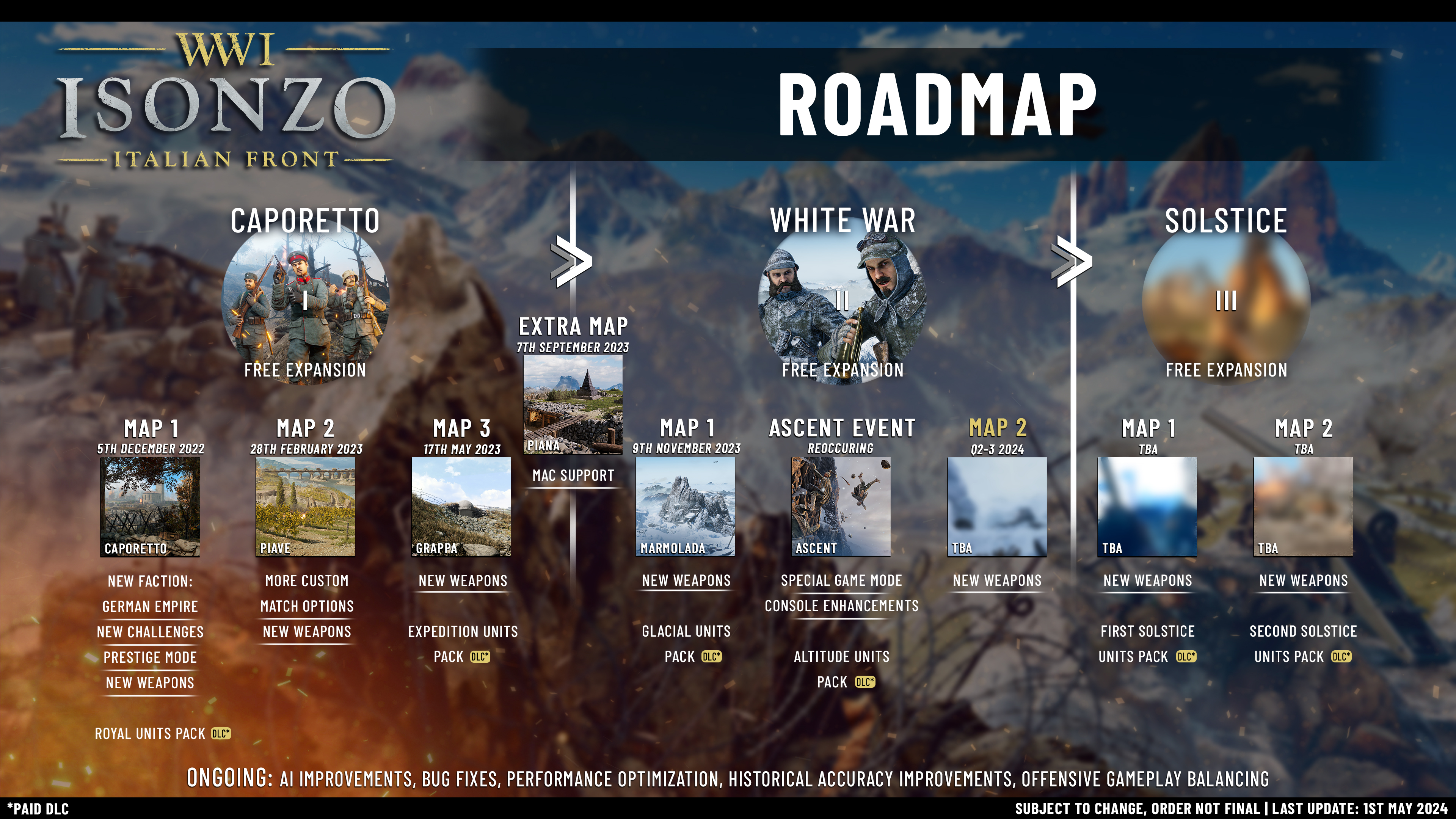
Until next time, soldiers.

What makes Isonzo stand out from the crowd?
NewsThere's a wealth of fantastic FPS games out there these days, and if you're a PC gamer you could do a lot worse than checking out the Steam FPS Fest happening...

Get ready to rock! The Ascent event is live until April 24th.
NewsJump into Isonzo and either assault or defend the sheer rockface of the Marmolada mountain. 16 brave Italian mountaineers attempt to scale the Marmolada...

All about the Ascent event - climb for victory from April 10th!
NewsWe go in-depth about the Ascent game mode coming next week!

Prepare for your Ascent!
NewsThe roadmap is updated and the name of the new game mode is announced: Ascent! A new teaser image reveals more about what to expect, and the Altitude...



















This looks great! Great job!
Отличная игра!